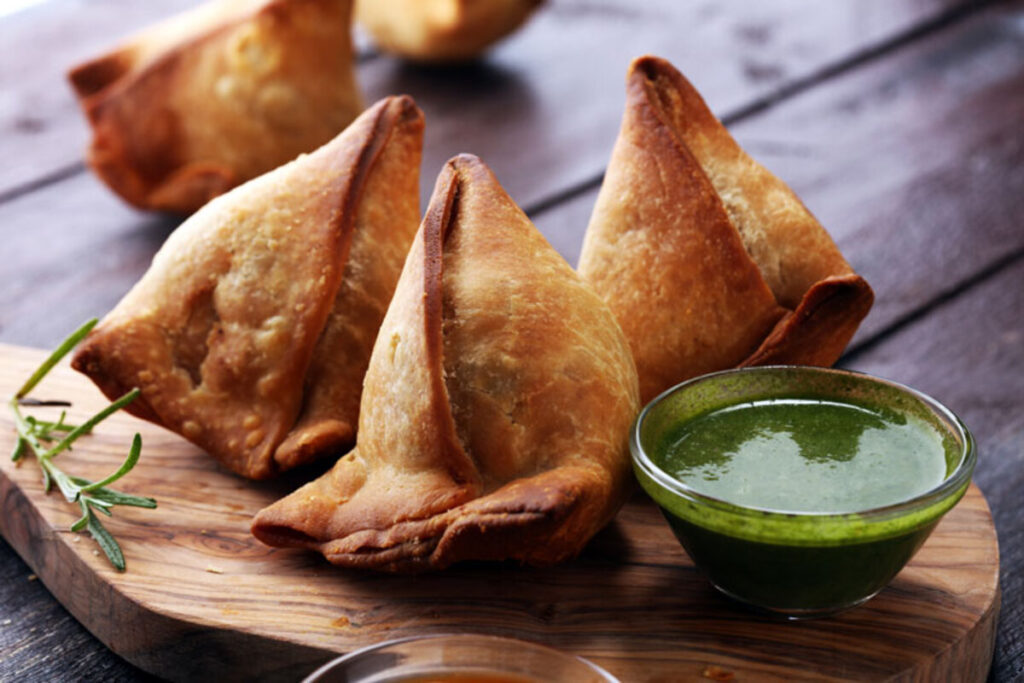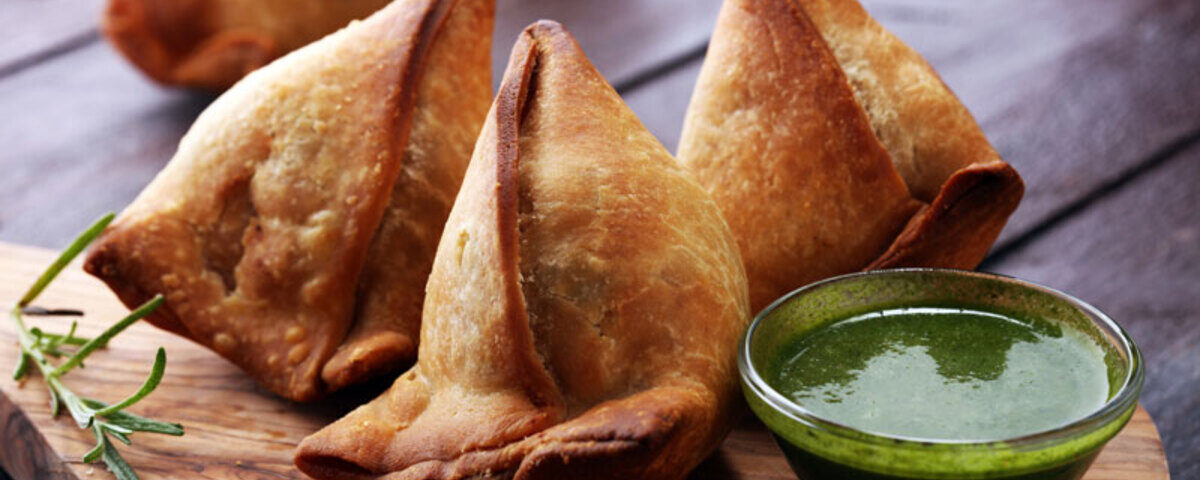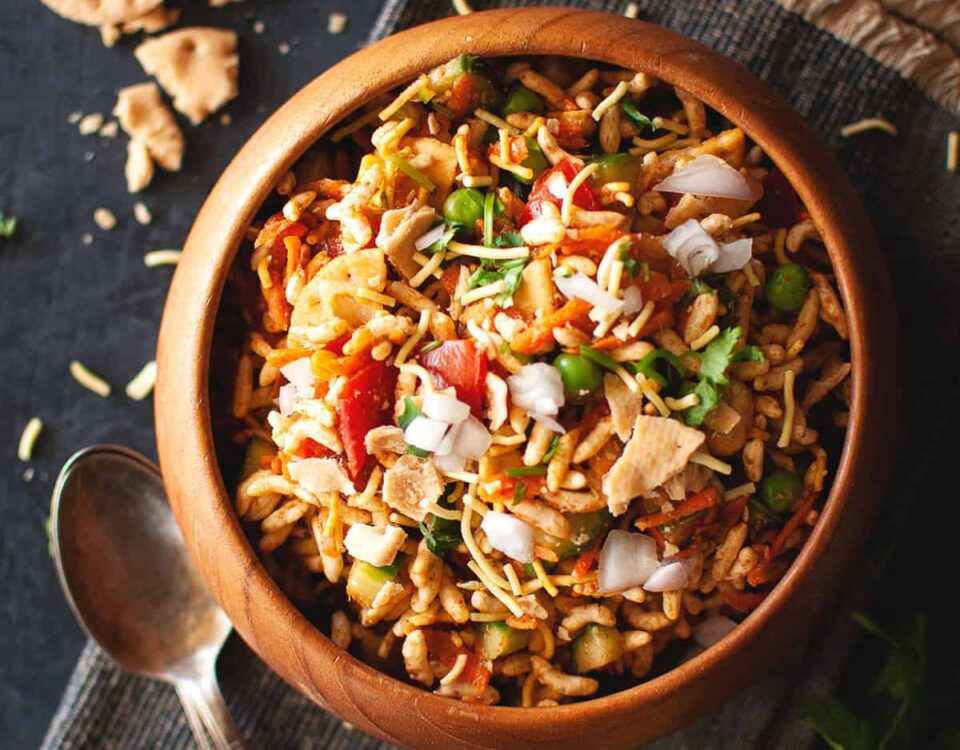
The Ultimate Guide to Biryani: Origin, Varieties, and Recipe

Moussaka: A Traditional Mediterranean Delight
Samosa: A Delectable Culinary Experience
The samosa, a delightful and savory Indian pastry, has become a global favorite. Characterized by its crispy outer layer and delectable fillings, samosas are enjoyed by people of all ages and across various cultures. The samosa is much more than just a snack; it is a perfect example of how simple ingredients can be transformed into a culinary masterpiece.

A Brief History of Samosas
Origins
The origins of the samosa can be traced back to the Middle East, where early versions were known as sambosa or sanbosag. These were popular in medieval Persia and were made by stuffing thinly rolled pastry with minced meat, vegetables, dried fruits, and spices before deep-frying them to perfection. The samosa found its way to the Indian subcontinent during the medieval period, likely brought by traders and travelers.
Evolution in India
In India, the samosa adapted to local tastes and ingredients, evolving into the version we know and love today. While the traditional meat-filled serves persisted, vegetarian versions, featuring a scrumptious filling of spiced potatoes, peas, and sometimes lentils, became highly popular. This adaptability played a significant role in the samosa’s sustained popularity and its status as a staple snack in Indian culture.
Ingredients: The Heart and Soul of a Samosa
To achieve the perfect samosa, attention to ingredient quality and balancing flavors is crucial.
The Dough:
- Flour: All-purpose flour is commonly used to make the dough.
- Oil/Ghee: Adds richness and helps in achieving the desired flakiness.
- Ajwain Seeds (optional): Adds a hint of carom flavor.
- Salt and Water: Essential for binding the dough.
The Filling:
- Potatoes: Boiled and mashed, the main ingredient in vegetarian samosas.
- Peas: Add texture and sweetness.
- Spices: Such as cumin seeds, coriander powder, garam masala, turmeric, red chili powder, and amchur (mango powder) provide depth of flavor.
- Aromatics: Onion, ginger, and garlic infuse the filling with taste.
- Green Chilies and Fresh Coriander: For a fresh, spicy kick.
Variations:
The samosa filling is highly versatile and can include minced meat (keema), mixed vegetables, lentils, paneer (Indian cottage cheese), and even sweet fillings for dessert versions.
How to Make Samosas: Step-by-Step Guide
Preparing the Dough:
- Mixing: In a large bowl, combine flour, ajwain seeds (if using), and salt. Add oil or ghee and mix until the mixture resembles breadcrumbs.
- Kneading: Gradually add water and knead until a firm dough forms. Cover with a damp cloth and let it rest for 30 minutes.
Making the Filling:
- Cooking Spices and Aromatics: Heat oil in a pan. Add cumin seeds and let them sizzle. Add chopped onions, ginger, garlic, and green chilies. Cook until the onions are soft.
- Adding Vegetables: Add boiled, mashed potatoes and peas. Mix well.
- Spicing Up: Add coriander powder, garam masala, turmeric, red chili powder, amchur powder, and salt. Cook for a few minutes until the flavors meld together.
- Fresh Herbs: Stir in chopped fresh coriander and let the filling cool.
Assembling and Frying:
- Rolling the Dough: Divide the dough into equal-sized balls. Roll each ball into a thin oval or circle and cut it in half.
- Forming Cones: Take one half, fold it into a cone shape, and seal the edge with water.
- Filling: Stuff the cone with the prepared filling and seal the opening, ensuring there are no gaps.
- Frying: Heat oil in a deep pan. Fry the samosas in hot oil until they are golden and crispy. Drain on paper towels.
Serving Suggestions
Samosas are typically served hot with an array of accompaniments:
- Green Chutney: Made with fresh coriander, mint, green chilies, and lime juice, this chutney adds a zesty contrast.
- Tamarind Chutney: A sweet and tangy dip made from tamarind pulp, jaggery, and spices.
- Raita: A cooling yogurt-based side dish with cucumber, mint, and spices.
- Chole: A spicy chickpea curry, common in North India.
Nutritional Information
While samosas are undoubtedly a delicious treat, they are best enjoyed in moderation due to their deep-fried nature. However, they do offer several nutritional benefits:
- Carbohydrates: The dough and potatoes provide a good source of energy.
- Proteins and Fiber: The peas add protein and fiber, making the filling more nutritious.
- Vitamins and Minerals: Spices used in the filling provide a range of vitamins and minerals with various health benefits.
Cultural Significance and Popularity
In India
In India, samosas are enjoyed across all states, irrespective of cultural differences. They are a common feature at celebrations, festivals, and gatherings. Street vendors skillfully prepare and sell samosas from bustling markets to tranquil alleys, making them an integral part of India’s vibrant street food culture.
Global Reach
The samosa has crossed borders and oceans to become a beloved snack worldwide. Indian diaspora communities have introduced samosas to their new homes, and the snack has been eagerly embraced, especially in the United Kingdom, the United States, Canada, and South Africa, among others. Internationally, variations of the samosa have appeared, reflecting local tastes and ingredients.
Variations Around the World
- Sambusa (East Africa): Similar to the Indian version but often spicier and sometimes filled with fish or lentils.
- Sambousek (Middle East): Cheese, meat, or vegetable-filled pastries, smaller in size.
- Chamuças (Portugal and Brazil): Reflecting Portuguese influences, they are often filled with spicy meat and are a testament to the spread of samosas during the colonial era.
Conclusion
The samosa is more than just a snack; it’s a culinary icon with a rich history and cultural significance. Its global popularity is a testament to its irresistible combination of flavors and textures. Whether enjoyed with a cup of hot chai on a rainy day or served as an appetizer at festive gatherings, the humble samosa continues to bring joy to millions, one crispy bite at a time.
Call to Action:
Have you tried making samosas at home? Share your experiences and favorite filling combinations in the comments below. Don’t forget to share this article with fellow samosa lovers!


